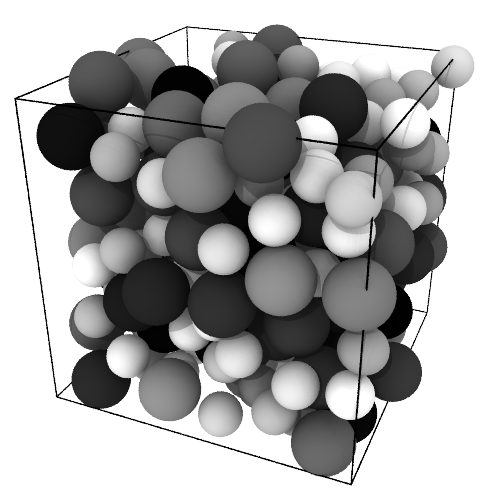DENSE SUSPENSIONS LAMMPS TUTORIAL

Get started
- Familiarise yourself with the physics of dense suspensions by reading e.g. Guazzelli and Pouliquen or Ness, Seto and Mari.
- This site accompanies the tutorial here.
- The following assumes you are using Mac or Linux and that you have a working knowledge of the terminal.
I already have LAMMPS
- Put the lubrication .cpp file and .h file in your lammps/src/ directory.
- Install the granular and colloid packages by running in lammps/src/: make yes-GRANULAR yes-COLLOID
- Recompile LAMMPS
- Run the input scripts in.create and in.run just like any other.
I don't already have LAMMPS
- Download LAMMPS to a suitable working/ directory (I used: LAMMPS Stable 23rd June 2022, download the .tar.gz here)
- Download the lubrication .cpp file and .h file and place these in: working/lammps-stable_23Jun2022/src/
- Download the input scripts in.create and in.run and place them in working/
- In Terminal, enter: working/lammps-stable_23Jun2022/src/
- Issue the command: make yes-GRANULAR yes-COLLOID
Then do:
Compile and run serial LAMMPS on a laptop (I used MacOS 12.6)
- Ensure that working/lammps-stable_23Jun2022/src/MAKE/Makefile.serial addresses the correct compiler settings for your machine. (Probably not necessary on Linux, but on Mac I did: sed -i '' 's/g++/g++-11/g' MAKE/Makefile.serial from within working/lammps-stable_23Jun2022/src/, see also the documentation)
- Compile LAMMPS by entering: working/lammps-stable_23Jun2022/src/ and issuing the command: make serial
- If successful, you can view the installed packages by running: ./lmp_serial -h
- In working/, issue the command: lammps-stable_23Jun2022/src/lmp_serial -in in.create
- The output data.file contains the starting configuration to be used by in.run
- Issue the command: lammps-stable_23Jun2022/src/lmp_serial -in in.run
Generate packing at prescribed volume fraction
Run a rheology simulation
Or:
Compile and run parallel LAMMPS on a cluster (I used Eddie)
- Ensure the appropriate compiler is available. On Scientific Linux I ran: module load openmpi/1.10.1
- Compile LAMMPS by entering the directory: working/lammps-stable_23Jun2022/src/ and issuing the command: make mpi
- If successful, you can view the installed packages by running: ./lmp_mpi -h
- In working/, issue the command: mpirun -np 2 lammps-stable_23Jun2022/src/lmp_mpi -in in.create
- The output data.file contains the starting configuration to be used by in.run
- Issue the command: mpirun -np 2 lammps-stable_23Jun2022/src/lmp_mpi -in in.run
Generate packing at prescribed volume fraction
Run a rheology simulation
Finally
- Always refer to the LAMMPS documentation.
- Refer to your local IT support for compilation questions.
- Contact me: chris.ness@ed.ac.uk
- That's it! Further detail is in the tutorial here.